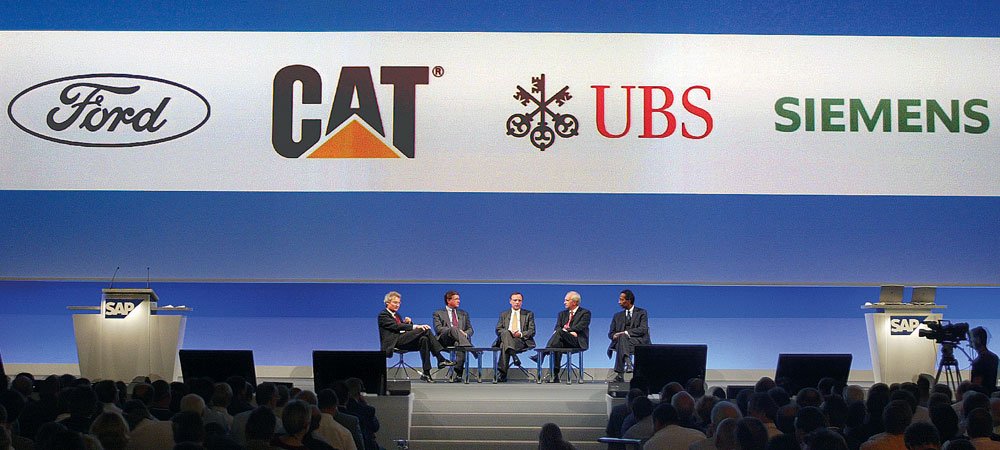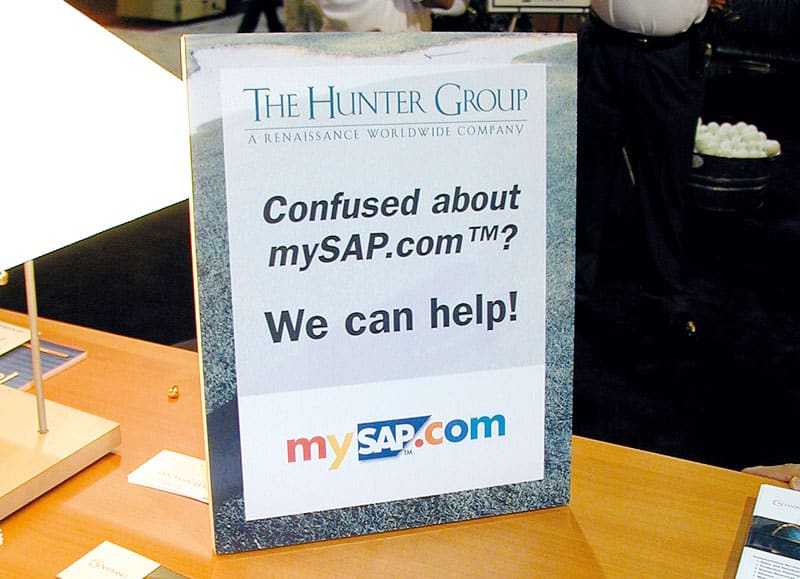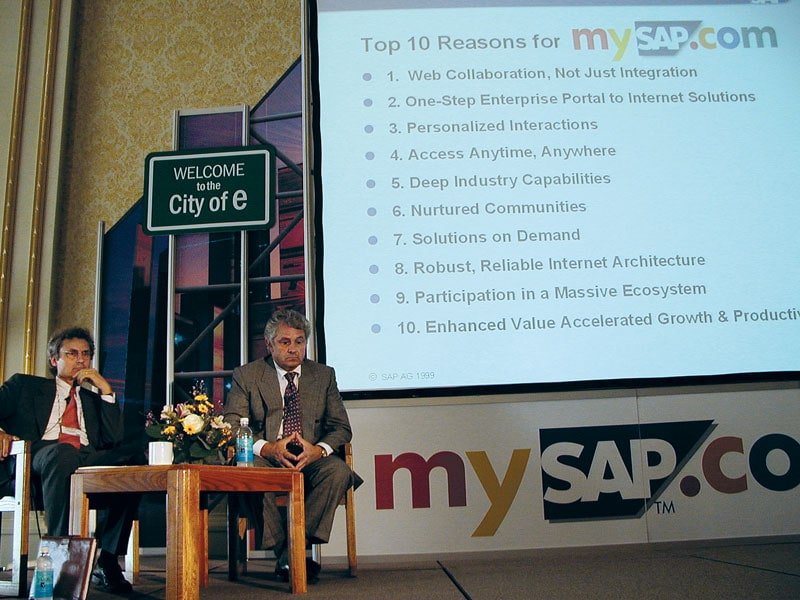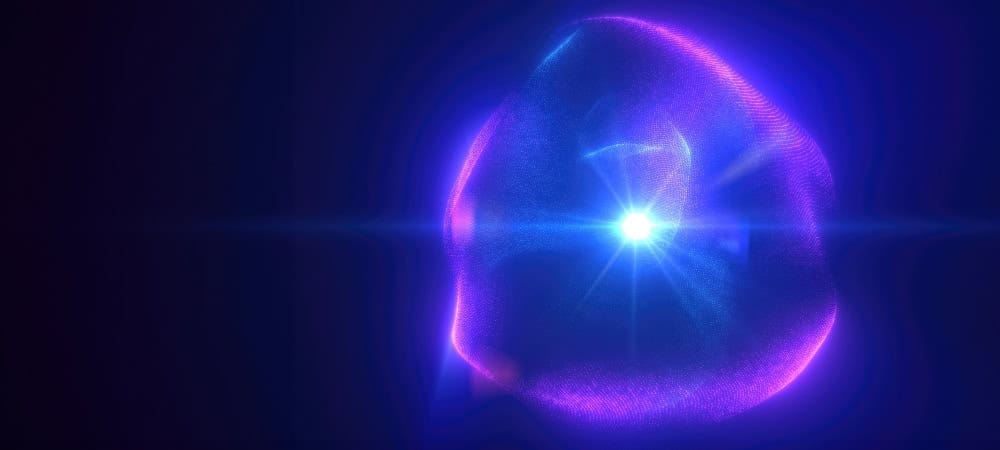

The official title of the annual SAP event is "Sapphire Now", much more appropriate would be "Sapphire Vintage". Wikipedia writes, Vintage is a style in fashion and design in which older, usually used clothing, furniture, musical instruments, jewelry, accessories, pictures, vehicles or other utilitarian objects are reused or imitated.
A recent study by the Boston Consulting Group shows: 80 percent of companies rely on digital solutions to address their current business challenges - but only just under 30 percent realize a successful digital transformation of their business. With numerous announcements at Sapphire 2022 in Orlando, SAP sought to help its existing customers finally become successful - before they migrate to competitors like Salesforce, ServiceNow, Workday, Oracle and Microsoft. SAP's transformational journey is meant to create innovative and cloud-based solutions for key end-to-end business processes. Ultimately, however, the Orlando event was merely old wine in new skins.
Among the innovations announced by SAP were new iOS apps designed to optimize the digital supply chain. The first two apps, Warehouse Operator and Direct Distribution, are available now in the Apple App Store. So Apple was already back on the Sapphire stage. The young SAP executives praised this collaboration because they obviously didn't know the past: Back in 2016, there was an intense friendship and partnership between Apple CEO Tim Cook and SAP CEO Bill McDermott.

"For 50 years, SAP's mission-critical solutions and deep industry expertise have helped organizations around the world perform their best"explained SAP CEO Christian Klein, somewhat woodenly and in a roundabout way. In Orlando, he also asked the rhetorical question of what makes SAP so special. His answer: "You. Our community, our partners, our customers from all over the world. The community gives me the energy and motivation to work every day for the success of our customers. Our goal is more important than ever: make the world run better. We will continue to deliver market-defining innovations."
But SAP's new love affair with its partners is not much different than the Apple liaison - old wine in new skins: Over the past 50 years, partners have been praised time and again, and Accenture, Siemens, Lenovo, IBM, InfoSys, McKinsey, Ecovadis, etc. have been brought onto the Sapphire stage - as long as SAP could profit from them.
"With our SAP Business Network, we are building the LinkedIn of the B2B world.", Klein tried to convince the few visitors and partners at Sapphire Vintage. "You get end-to-end visibility across your supply chain. Our Business Network makes your supply chain resilient, transparent and agile."
Naturally, SAP needs a functioning partner network for these challenges, which was also evoked again and again in Orlando - but: It is and remains a running gag, when an SAP partner comes to Walldorf, he is greeted with the words: "What can you do for SAP?"
So where does SAP benefit from the partnerships? On the occasion of an IBM announcement on Sapphire, the pattern can be seen: Under an expanded partnership, IBM will migrate to S/4 to perform work across more than 120 countries, 1000 legal entities and numerous IBM business units for software, hardware, consulting and finance. The project, focused on improving business processes with Rise with S/4 Cloud Private Edition, will ultimately move more than 375 TB of data on IBM Power on Red Hat Enterprise Linux to the IBM cloud, with IBM consulting acting as a Rise premium provider for itself. SAP partner IBM becomes best Rise customer - partnership works like that, too.
Christian Klein commented on Rise on the Sapphire stage: "You have to keep up in a world that is changing faster than ever. How can we transform any business into a smart business? Our solution is Rise with SAP. True business transformation is not achieved by a simple technical migration to the cloud. Rise with SAP will tailor the holistic transformation journey to your needs." But the latest survey by the DSAG user association shows that a large proportion of German-speaking SAP existing customers and DSAG members are reserved about the offering or even unsure. Vintage: Nothing has changed in the past 23 years. "Confused about Rise?" - or as the photo from Sapphire Philadelphia 1999 shows, "Confused about mySAP.com?"

The current SAP vintage puzzle for Sapphire Orlando 2022: The large photo with Professor Henning Kagermann (l.) and Professor Hasso Plattner (r.) shows a presentation from Philadelphia from Sapphire in 1999. Question: Which of the ten reasons for SAP software no longer apply today? Naturally, the wording has changed or been adapted in many IT areas, but the core statements remain valid for more than 20 years, don't they? This insight should do credit to the two protagonists, Kagermann and Plattner, and motivate the young SAP board members to reflect on many buzzwords and ostensible innovation.

At that time, Rise was still called mySAP.com. The reasons for the release change have remained the same.
"When you choose Rise with SAP, you get end-to-end responsibility for system monitoring, performance, availability. And that's important because it's all about your business-critical processes"Christian Klein emphasized - obviously without any knowledge of SAP's past. An own goal was then his statement: "We have 2000 Rise SAP customers after one year, 60 percent of which are new customers. Rise is there for everyone." With over 400,000 customers, SAP was only able to convince half a percent of the existing base, and new customers have little chance of escaping the Rise offer, which explains the 60 percent hit rate. So in Orlando, once again, the partners had to take the blame for SAP's success: Atos, Wipro, Accenture, HCL, Fujitsu, IBM (see above) and AMD were named as successful Rise examples.
The Innovator's Dilemma: Already at Sapphire 2014 there was an exciting discourse between Professor Hasso Plattner and Professor Clayton M. Christensen, see photo. Christensen was a US economist and professor at the renowned Harvard Business School and died in Boston in 2020. Probably his most famous book is "The Innovator's Dilemma", in which the infamous sentence can be found: "If a company tries to develop a disruptive technology to the point where it meets the needs of customers in established markets-which most leading companies do-its failure is all but assured." (See also Editorial.)

At the 2014 Sapphire stage in Orlando, Hasso Plattner was naturally of the opposite opinion when he tried to defend his SAP and his innovation Hana - it almost came to blows between the two professors on the open stage!
Nothing has changed in the past few years in terms of the validity of this sentence, and SAP has missed a great opportunity by not thinking enough about the impact of Professor Christensen's statements. Christian Klein is now paying the price for this: time and again, he has to justify himself for Hana, S/4, and Cloud and use cheap sleight of hand like Rise to inject a little momentum into the stalled cart.






